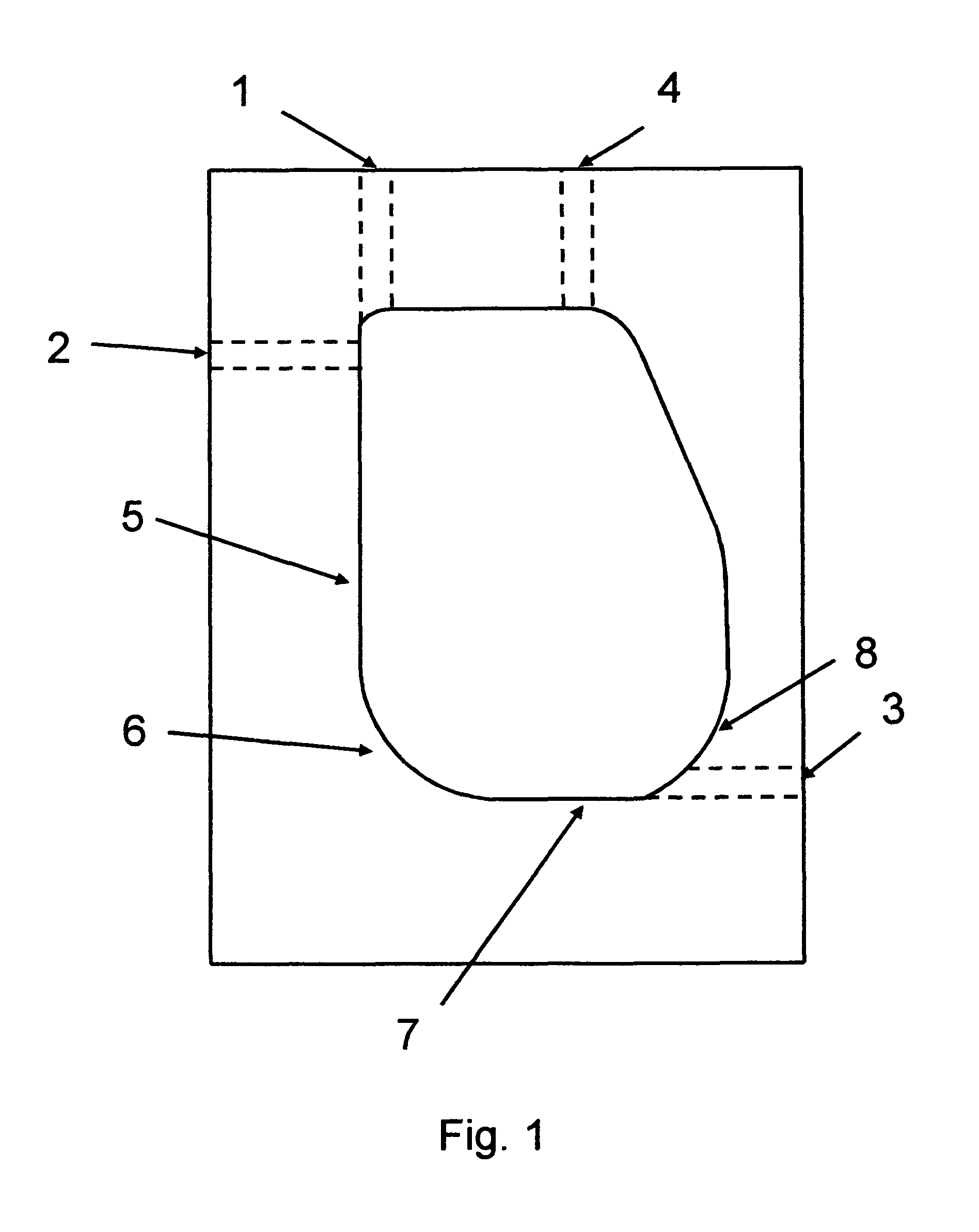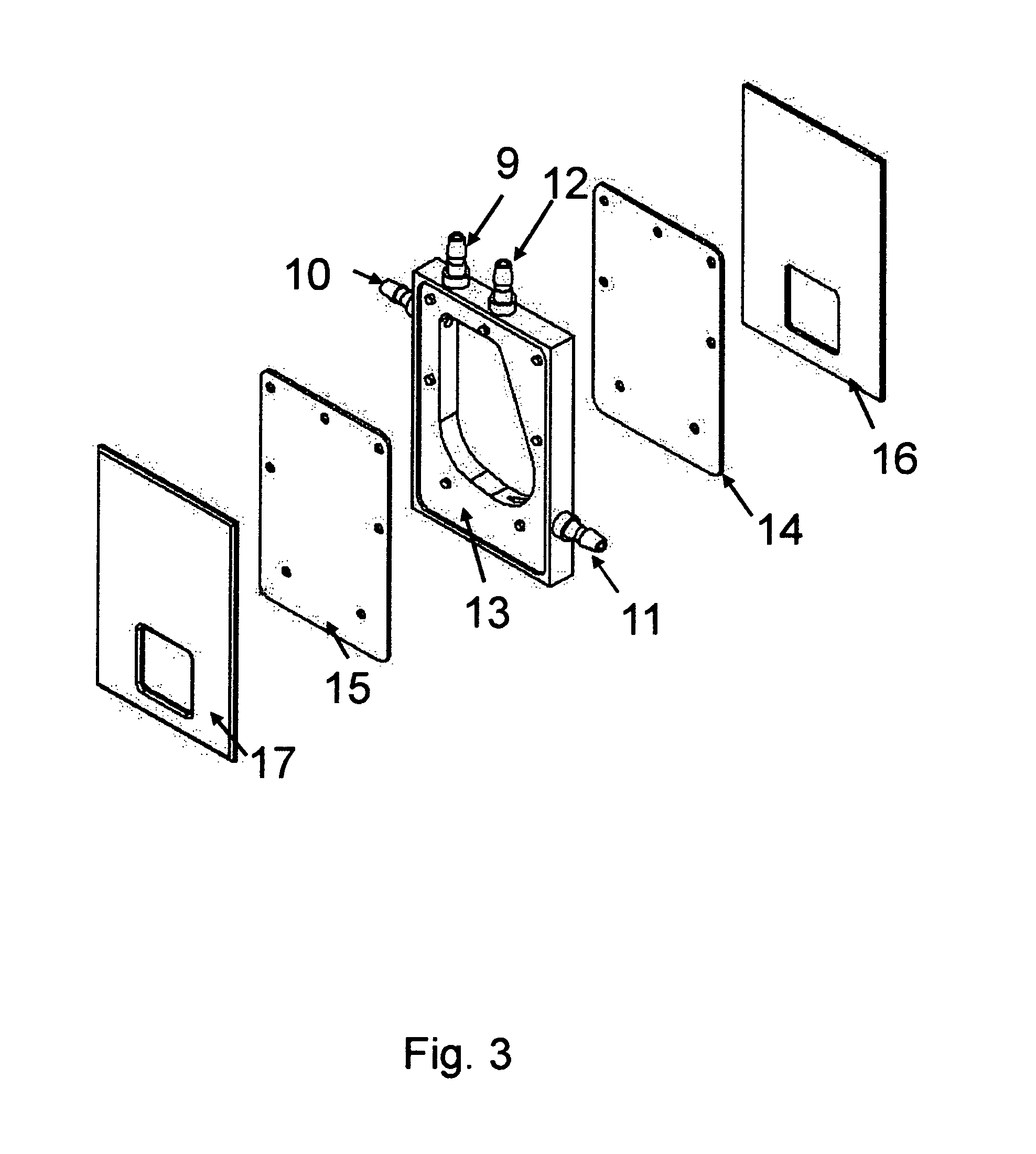Dynamic mixing and electroporation chamber and system
a technology of electroporation chamber and electroporation chamber, which is applied in the direction of specific use bioreactor/fermenter, enzymology, after-treatment of biomass, etc., can solve the problems of reducing the efficiency of transfection, degrading the polynucleotide, and increasing the volume of cells transfected in increments, so as to achieve enhanced mixing
- Summary
- Abstract
- Description
- Claims
- Application Information
AI Technical Summary
Benefits of technology
Problems solved by technology
Method used
Image
Examples
example 1
[0123]Demonstration of water-based liquid mixing in chamber. See Table 1 below. Efficiency of water-based liquid mixing in various chamber shapes was evaluated using water-based liquids with pH sensitive dyes. In this experiment, placement of inlet orifices on the same or opposite sides was evaluated. Water-based liquid A was prepared as follows: Glacial acetic acid (4.5 ml) was mixed with 1.5 L water. Thymol blue dye (150 mg) was dissolved in 15 ml DMSO. The dye and acid water-based liquids were then mixed. Sephadex G25 (20 gm / 250 ml water-based liquid) was mixed into the acid-dye water-based liquid to simulate cell density. Water-based liquid B was prepared as follows: Sodium hydroxide (4 gm) was added to 96 ml water. The original color of water-based liquid A was orange. The original color of water-based liquid B was clear. The color of the two water-based liquids mixed at a ratio of 5 ml water-based liquid A to 0.75 ml water-based liquid B was blue.
[0124]Watson-Marlow peristalti...
example 2
[0128]Demonstration that RNAse contamination impairs expression of mRNA delivered using electroporation unless electroporation pulses are delivered before RNA degradation. See FIG. 6, circular points for after 60 seconds after mixing. VERO cells were grown to confluence in T150 tissue culture flasks. The cells were harvested using cell culture grade trypsin. Cells were mixed with complete growth medium and washed 2 times in Cytoporation Medium T-4 (Cyto Pulse Sciences, Inc.). This electroporation medium is RNAse free. The cells were re-suspended in Cytoporation Medium T-4 at a cell density of one million cells / ml. Cells were divided into 2 groups. In one group contamination of RNAse was simulated by adding 50 units / ml RNAse I. No RNAse was added to the other cell suspension. Messenger RNA capable of expressing green fluorescent protein (GFP) was added at a concentration of 40 μg / ml at various times prior to electroporating the cells in 4 mm gap electroporation cuvettes. The electrop...
example 3
[0130]Demonstration that RNAse contamination impairs expression of mRNA delivered using electroporation unless electroporation pulses are delivered before RNA degradation—evaluation at shorter time intervals. See FIG. 6, circular points prior to 60 seconds after mixing. VERO cells were grown to confluence in T150 tissue culture flasks. The cells were harvested using cell culture grade trypsin. Cells were mixed with complete growth medium and washed 2 times in Cytoporation Medium T-4 (Cyto Pulse Sciences, Inc.). This electroporation medium is RNAse free. The cells were re-suspended in Cytoporation Medium T-4 at a cell density of two million cells / ml. Cells were divided into 2 groups. In one group contamination of RNAse was simulated by adding 50 units / ml RNAse I. No RNAse was added to the other cell suspension. See FIG. 6, rectangular shaped points. Messenger RNA capable of expressing green fluorescent protein (GFP) was added at a concentration of 40 μg / ml at various times prior to e...
PUM
| Property | Measurement | Unit |
|---|---|---|
| volumes | aaaaa | aaaaa |
| volumes | aaaaa | aaaaa |
| volumes | aaaaa | aaaaa |
Abstract
Description
Claims
Application Information
 Login to View More
Login to View More - R&D
- Intellectual Property
- Life Sciences
- Materials
- Tech Scout
- Unparalleled Data Quality
- Higher Quality Content
- 60% Fewer Hallucinations
Browse by: Latest US Patents, China's latest patents, Technical Efficacy Thesaurus, Application Domain, Technology Topic, Popular Technical Reports.
© 2025 PatSnap. All rights reserved.Legal|Privacy policy|Modern Slavery Act Transparency Statement|Sitemap|About US| Contact US: help@patsnap.com



